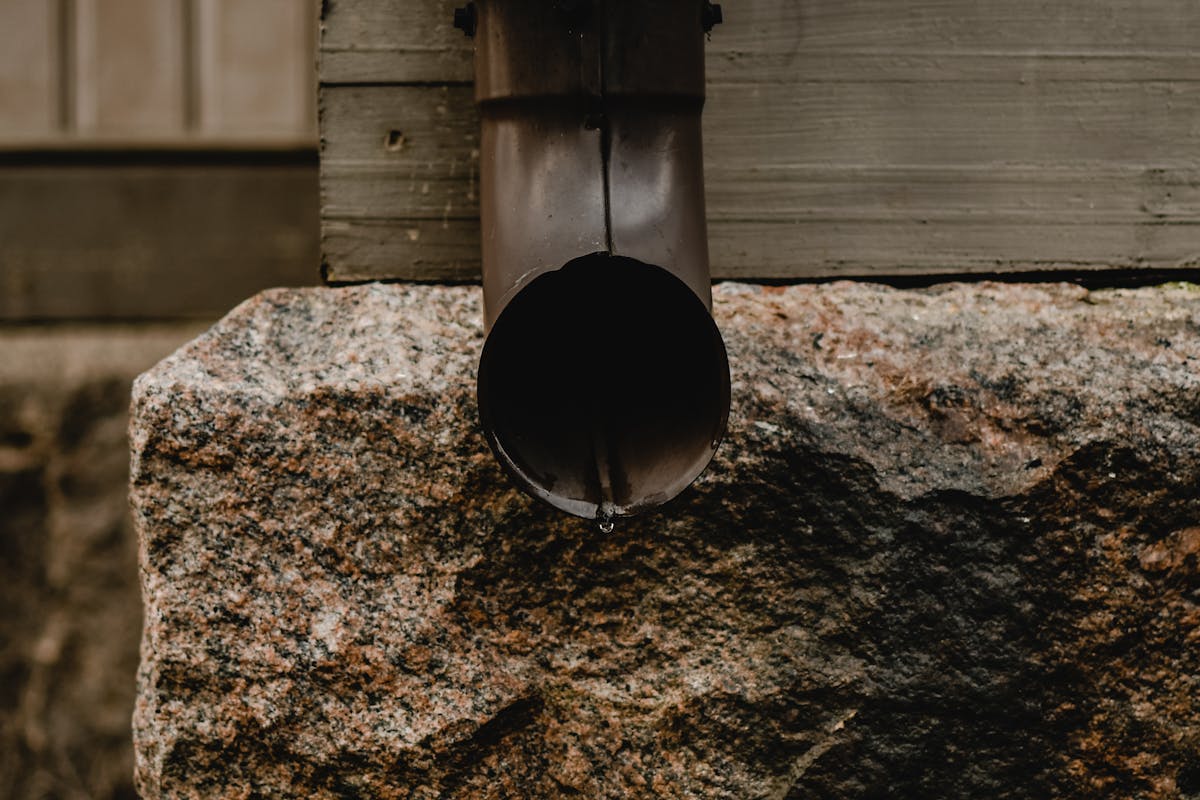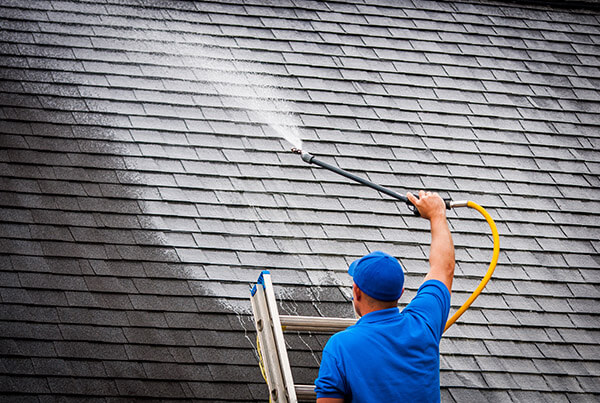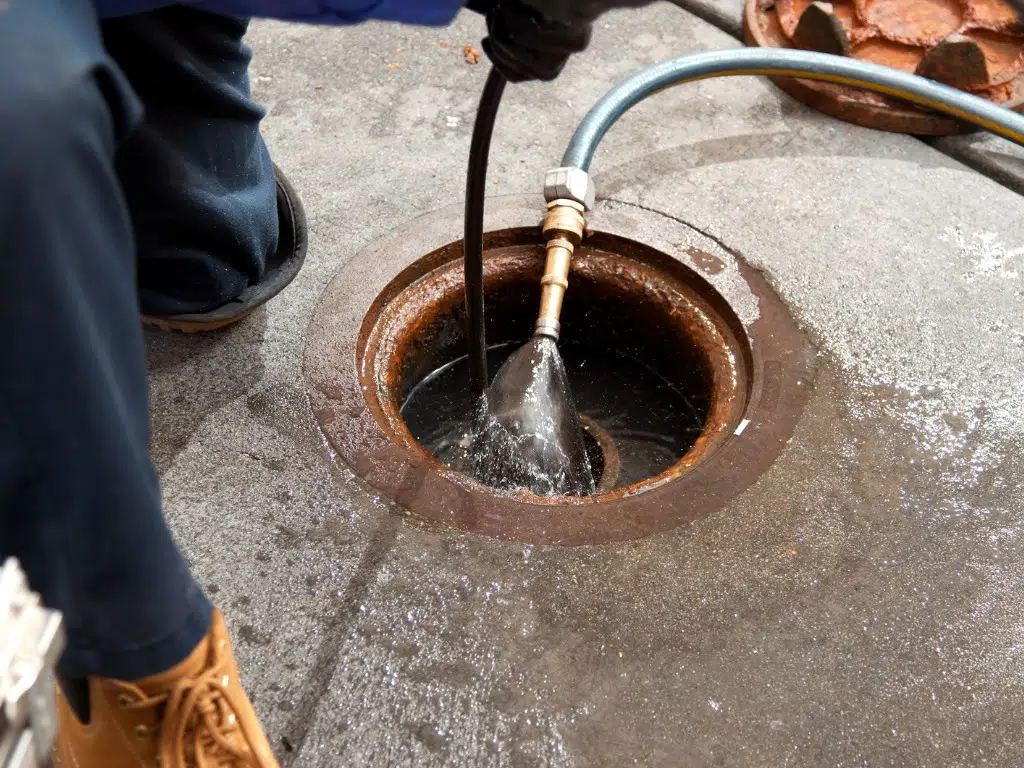When rain hits your roof, it needs somewhere to go. Without proper downspout drainage, that water can pool around your foundation, cause erosion, and even lead to basement flooding. At Ware Landscaping, we’ve seen firsthand how small drainage issues can turn into major headaches — but the good news is, there are reliable, affordable, and often DIY-friendly ways to keep water under control.
Why Effective Downspout Drainage Matters
Every time it rains, hundreds of gallons of water run off your roof. For every 1,000 square feet, a one-inch rainfall can generate over 600 gallons of runoff. If that water collects near your foundation, it can weaken soil, create cracks, and increase hydrostatic pressure — putting your home’s structural integrity at risk.
Redirecting this water at least 5–10 feet away from your foundation is key to preventing damage. The ideal distance can vary based on your soil type, local rainfall, and slope, but the principle remains the same: keep water moving away from your home.
Common Downspout Drainage Solutions
Let’s explore a few effective approaches, from simple surface fixes to more permanent underground systems.
1. Downspout Extensions & Splash Blocks
These are the easiest and most affordable drainage solutions. Extensions attach directly to your downspouts and carry water several feet away, while splash blocks diffuse the flow to reduce erosion.
- Pros: Cheap ($5–$20), easy to install, minimal tools required.
- Cons: Can shift over time and may not handle heavy rainfall.
- Pro Tip: Maintain a gentle slope (1–2%) away from the house, and secure flexible extensions with stakes.
2. Rain Barrels
Want to go green while solving drainage problems? A rain barrel collects roof runoff for reuse in watering gardens or lawns.
- Pros: Eco-friendly, reduces water bills, stores up to 100 gallons.
- Cons: Needs overflow management to prevent backup during storms.
- Pro Tip: Add a diverter valve to control overflow and placement.
3. Buried Downspout Systems
For a cleaner look and higher capacity, buried downspout drains route water underground through pipes that end in a dry well or pop-up emitter.
- Pros: Invisible, efficient for large rain events.
- Cons: Requires digging and careful installation.
- Pro Tip: Use Schedule 40 PVC instead of corrugated pipe for long-term durability and fewer clogs.
4. Dry Wells & French Drains
These systems collect and disperse water underground, allowing it to naturally filter into the soil. They’re excellent for yards prone to flooding or with poor natural drainage.
- Pros: Long-lasting, integrates with landscaping.
- Cons: Less effective in clay-heavy soils.
- Pro Tip: Line the pit or trench with landscape fabric to prevent silt buildup.
5. Rock Gutters or Dry Creek Beds
Want a solution that’s as beautiful as it is functional? Dry creek beds use decorative stones to channel water across your yard like a natural stream.
- Pros: Aesthetic appeal, prevents erosion.
- Cons: Requires more labor and upkeep.
- Pro Tip: Include edging to keep stones in place and maintain proper slope.
Things to Consider Before Installing
Downspout drainage isn’t one-size-fits-all. The best solution depends on your home’s specific conditions:
- Yard Slope: Water should always flow downhill from your foundation.
- Soil Type: Sandy soils absorb faster; clay soils may need longer extensions or dry wells.
- Local Codes: Some towns restrict routing water into streets or storm drains.
- Neighbors: Avoid directing water toward adjacent properties.
For Naperville homeowners, Ware Landscaping recommends combining surface-level fixes (like extensions) with long-term underground systems for the most reliable results.
Maintenance Tips for a Trouble-Free System
Even the best drainage system needs upkeep. Here’s how to keep yours working for years:
- Clean gutters twice a year – Clogged gutters make drainage issues worse.
- Check slope and connections after heavy rains.
- Flush underground pipes annually with a hose to remove sediment.
- Inspect for erosion near outlets and reseed bare soil.
- Winter prep: If you’re in a freeze-prone area, use freeze-resistant fittings or pop-up emitters.
Long-Term Benefits of Proper Drainage
A solid downspout drainage system doesn’t just protect your home — it improves your landscaping, reduces flooding risk, and can even boost your property value. Homeowners who invest in proper drainage often save thousands in potential foundation or water damage repairs.
According to the EPA, sustainable drainage systems like rain barrels can also reduce water usage by over 1,000 gallons per year. That’s good for your wallet and the environment.
Need Professional Help?
While many drainage improvements are DIY-friendly, complex yard slopes or underground systems should be left to professionals. At Ware Landscaping, our team designs customized downspout drainage solutions for Naperville-area homes that ensure long-term protection and compliance with local regulations.
We handle everything from site assessments to full installations — so you can rest easy knowing your home is safe from water damage, all year round.
Ready to stop water from pooling around your home?
Contact Ware Landscaping today to schedule a consultation and find the best exterior home cleaning and drainage solutions for your property.








